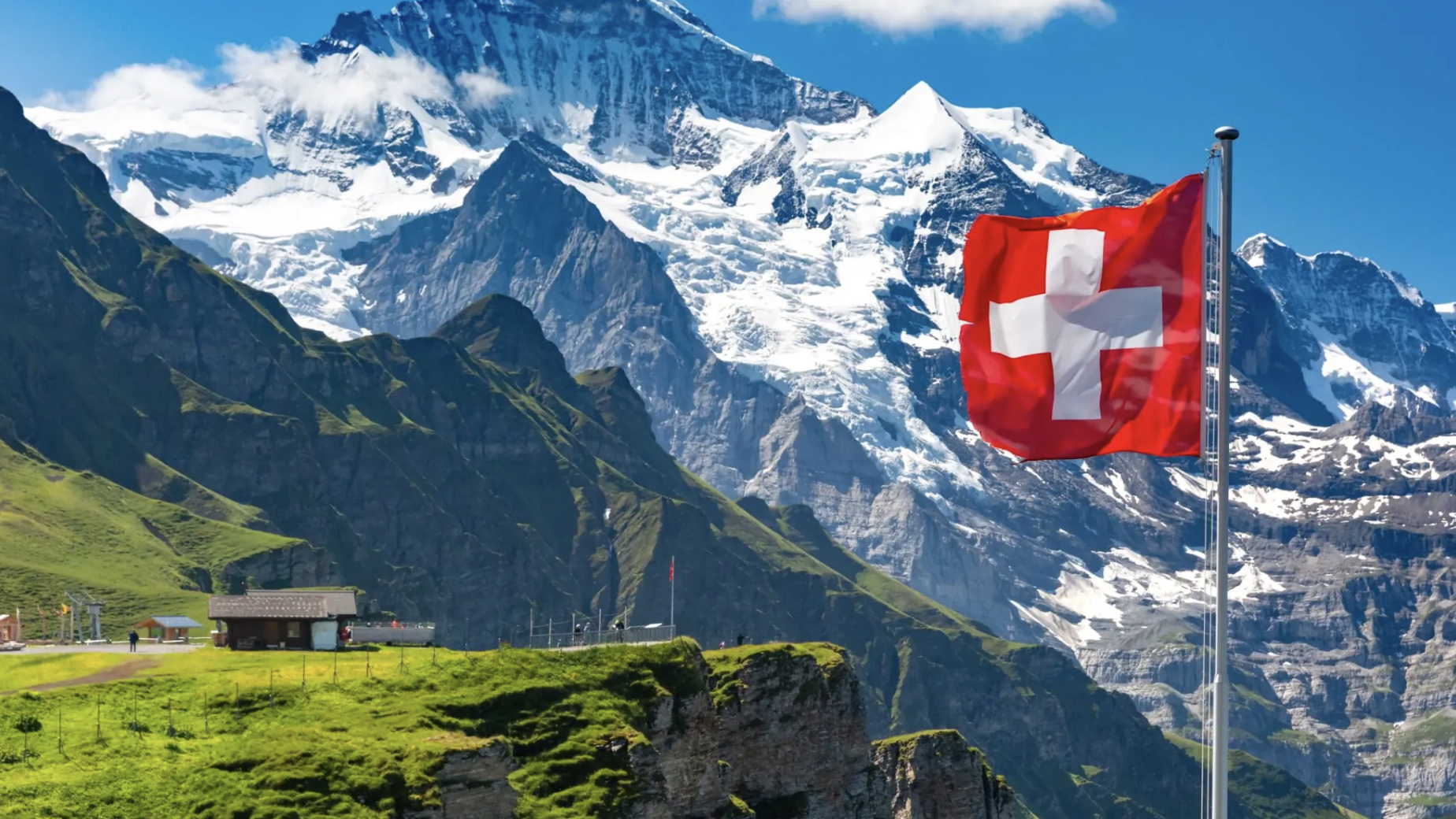【AZERBAIJAN】ETERNAL FLAME: HOW AZERBAIJAN BECAME THE LAND OF FIRE
Have you ever heard of the "Land of Fire"? ? Tall flames dance restlessly across a 10-meter stretch of hillside, making an already hot day even hotter.
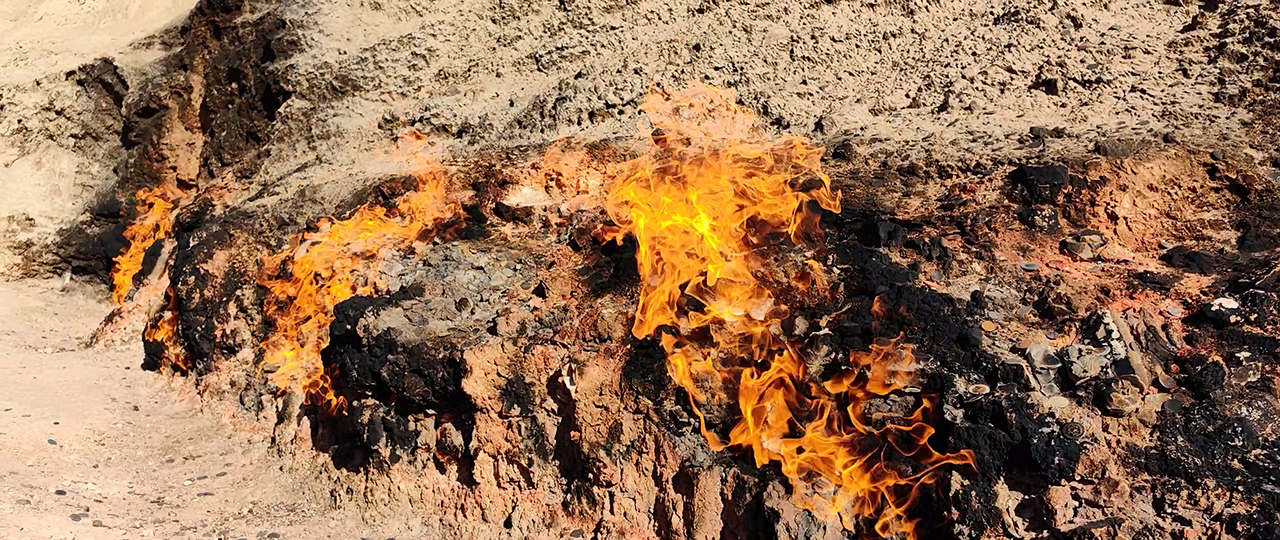
This is Yanar Dag, which translates to "burning mountainside," located on Azerbaijan’s Absheron Peninsula. Azerbaijan is rich in natural gas reserves, which often leak to the surface and cause the fire to burn continuously, day and night.
Located in the Caucasus region, Azerbaijan serves as the bridge between Europe and Asia. It was a crucial pathway on the Silk Road before being overtaken by Russia. Venetian explorer Marco Polo wrote about this mysterious phenomenon when he passed through this area in the 13th century. Other Silk Road merchants also spread news of the flames as they traveled to other lands. This is why Azerbaijan earned the name “the Land of Fire.”
Where is Azerbaijan?
Azerbaijan is part of the South Caucasus region, bordered by the Caspian Sea to the east, Russia to the north, Georgia to the northwest, Armenia and Turkey to the west, and Iran to the south. Baku is the capital and largest city.
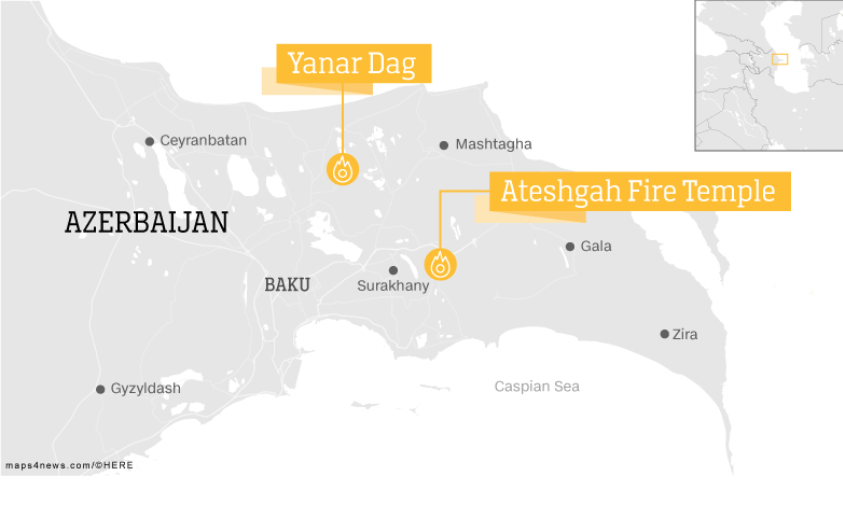
Source:CNN Travel
Ancient Religion
Azerbaijan has long been famous for its sources of eternal fires. In addition to Yanar Dag (blazing mountain), there is another eternal flame site where the Fire Temple is built.
The Fire Temple – Ateshgah is situated in the center of the Absheron Peninsula in the Surakhani settlement (now called Amirjan). The temple is located in a place where, from ancient times until the 19th century, natural gas seeped to the surface, causing the Eternal Flames phenomenon.
From ancient times, fire-worshippers from distant places and even Indian priests came here to seek and worship fire. This religion is known as Zoroastrianism. For Zoroastrians, fire is a link between humans and the supernatural world, and a medium through which spiritual insight and wisdom can be gained. It is purifying, life-sustaining, and a vital part of worship.
Today, most visitors visit the Ateshgah fire temple for the spectacle rather than religious fulfillment.
Ateshgah Fire Temple
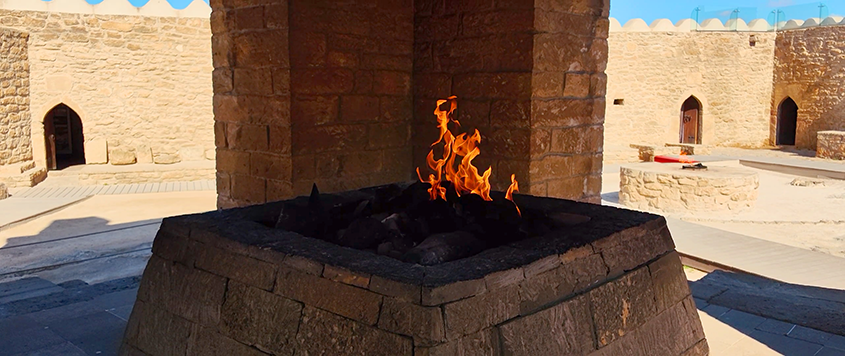
Azerbaijan’s best-known fire temple is the Ateshgah of Surakhani. Fire rituals at this site date back to the 10th century or earlier. The name Ateshgah comes from the Persian for “home of fire,” and the centerpiece of the complex is a cupola-topped altar shrine built upon a natural gas vent.
The Surakhani temple was erected centuries after Zoroastrianism declined in Azerbaijan and was built around a naturally burning flame. The structure, with its four arches open to an altar topped by a dome, dates back to the 17th century when traders from the Indian subcontinent reached Azerbaijan via the Silk Road and stopped here during their journey. The temple and its surrounding caravanserai welcomed people from different faiths: Hindus, Sikhs, and Zoroastrians had their prayer rooms, which are still visible today.
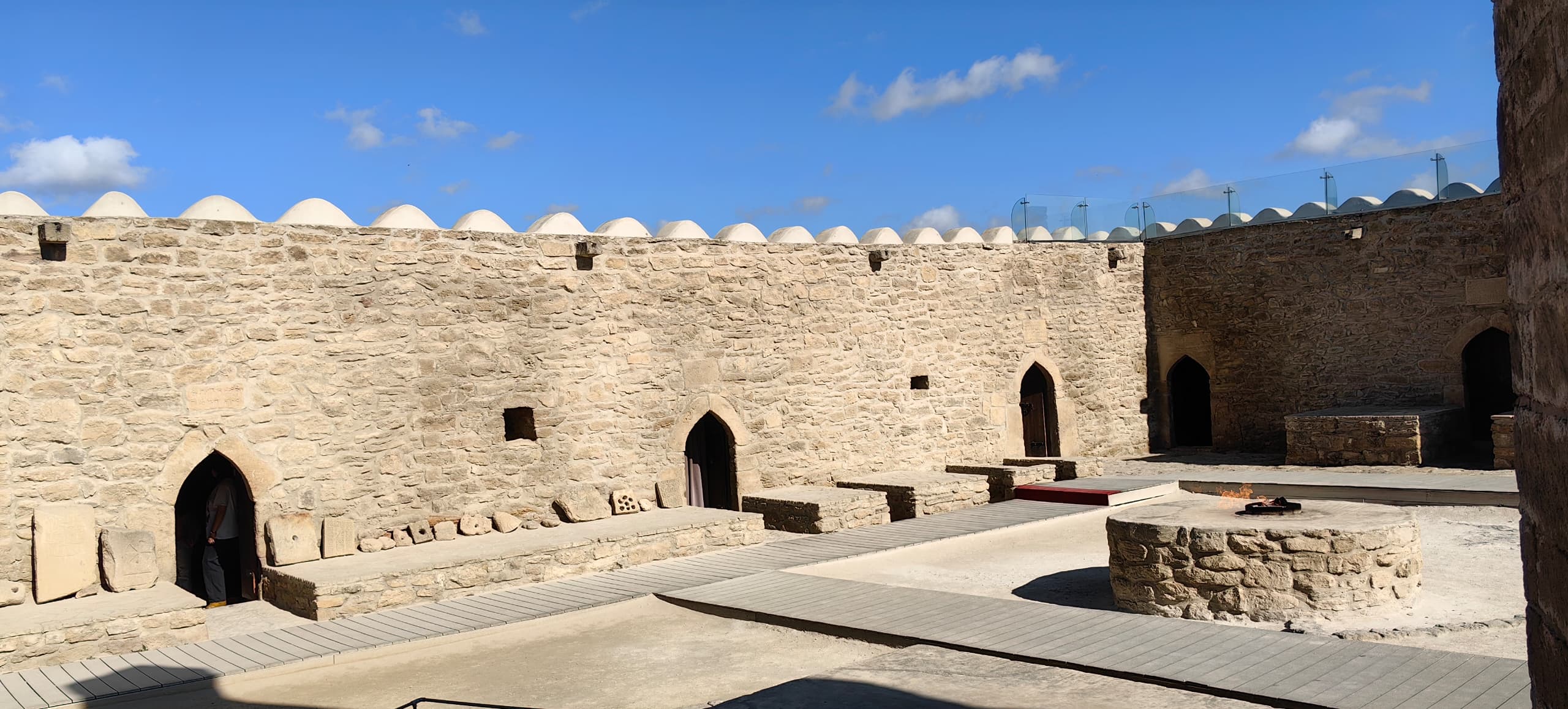
The fire inside the Surakhani Ateshgah stopped burning in the late 1960s, as its source of life – methane – was redirected. But in 1975, the castle-like site was reopened as a museum, and its flames were reignited once more, thanks to gas piped in from Baku.
The complex became a museum in 1975, was nominated as a UNESCO World Heritage Site in 1998, and today welcomes around 15,000 visitors a year.
References
https://edition.cnn.com/travel/article/yanar-dag-azerbaijan-land-of-fire/index.html
https://www.bbc.com/travel/article/20230712-azerbaijan-the-caucasus-land-of-fire




